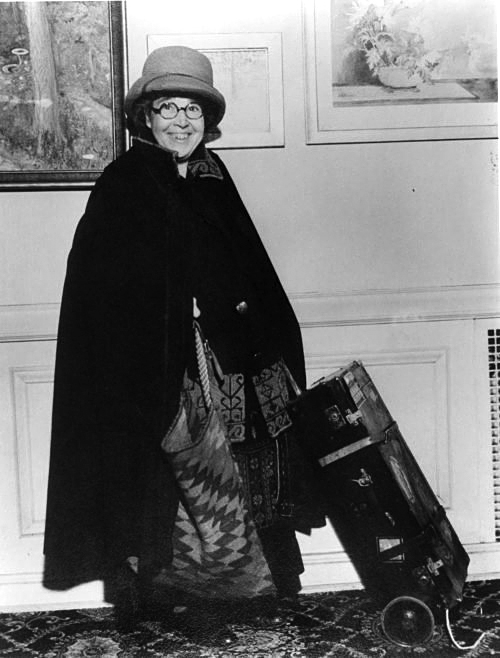
Tidbits
Anita Willets-Burnham (1880-1958) was an impressionist artist, a teacher, lecturer, and international traveler. She is best known for her 1933 book Round the World on a Penny about her international travels with her family. She was known as a penny pincher when it came to travel. She was once asked why she chose to travel third class. She answered, “Because there wasn’t fourth class.”
Anita was passionate about her art. She attended several prestigious art schools and colleges, and traveled throughout the world to study. Her work was exhibited throughout the country including at the world’s fair held in San Francisco in 1915.
She was also serious about her travel, visiting France, Spain, Belgium, England, and North Africa, Japan, Siam, Korea, China, India, Egypt, Palestine, Spain, England, Germany, Greece, Cyprus, Belgium, Morocco, Switzerland, and the East Indies.

Anita was a creative artist, but she was also a practical woman. She saw a problem and she created a simple solution – a solution that seems obvious to us now, but one that took decades to catch on. As a frequent traveler, she found it cumbersome to deal with her suitcases. It was during the planning of a trip during the 1920s, long before luggage with wheels was patented, that she decided to attach wheels from a baby carriage to her trunk with a telescoping handle to navigate it.
“Why be a human truck horse?” she asked in her book, Round the World on a Penny that was published in 1933. But despite the practicality of the idea, and the occasional newspaper photo showing Anita with her rolling trunk, wheeled luggage was not patented by Bernard Sadow until 1972, and the idea did not really catch on until the 1980s when pilot Robert Plath came up with a smaller wheeled bag.
So why did it take so long for the wheeled bags to catch on? When travel was limited to the wealthy, they had servants or porters to handle their luggage, but even in the 20th century, when travel had expanded to the middle classes, people were still lugging their bags around.
Katrine Marçal, author of Mother of Invention: How Good Ideas Get Ignored in an Economy Built for Men, puts it down to sexism. When wheeled suitcases were first introduced, they were considered niche products for women.
Sadow, the “official” inventor, agrees. He described how difficult it was to get any American department store chains to sell wheeled luggage: “At this time, there was this macho feeling. Men used to carry luggage for their wives. It was … the natural thing to do, I guess.”
According to Marçal, “Two assumptions about gender were at work here. The first was that no man would ever roll a suitcase because it was simply ‘unmanly’ to do so. The second was about the mobility of women. There was nothing preventing a woman from rolling a suitcase – she had no masculinity to prove. But women didn’t travel alone, the industry assumed. If a woman travelled, she would travel with a man who would then carry her bag for her. This is why the industry couldn’t see any commercial potential in the rolling suitcase. It took more than 15 years for the invention to go mainstream, even after Sadow had patented it.”
Eventually, wheeled suitcases became part of every traveler’s arsenal, and we can’t imagine how earlier travelers managed without them. Anita Willets-Burnham who continued to travel and lecture, towing her rolling trunk, until she was incapacitated by a stroke in 1956, was a woman ahead of her time.
Jim was a writer-broadcaster and producer on television and radio for 40 years. Listen to his podcasts on Lifestyles 55 Digital Radio. Find Radio Redux, and Mid-Century Memories at www.whatsupwinnipeg.ca/lifestyles-55digital-radio/



